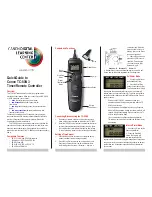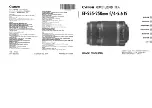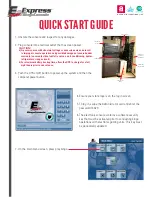
96
S
e
c
tion 5
Us
in
g
t
h
e
Ze
ro
Re
s
e
t Func
tion
ZX-T
Operation Manual
Section 5
DETAILED SETTINGS
Releasing Zero Reset
1.
Set the mode switch to RUN.
2.
Hold the ENT and RIGHT Keys down
together for about three seconds.
To release zero reset from an external device,
input the zero reset signal for one second
minimum.
Zero reset will be released and the zero reset indicator
will turn OFF.
Saving Zero Reset Level
Select whether or not to hold the measured value zero reset level when the power is
turned OFF.
Turn OFF zero reset memory if, as in the example below, the zero point is reset for each measure-
ment. If zero reset memory is enabled, the zero reset level data will be written in the Amplifier Unit
non-volatile memory (EEPROM) at each zero reset. The EEPROM can be written a maximum of
100,000 times. Writing the zero reset level for each measurement can, therefore, use up the life of
the memory and lead to malfunctions.
Example: Measuring Steps in Sensing Objects
Even if zero reset memory is set to OFF, the zero reset level will be saved if threshold values or other
functions have been changed. Zero reset will continue after startup when these functions have been
changed.
Selection
Details
ON (default)
Saves zero reset level when the power is turned OFF.
OFF
Zero reset is released when the power is turned OFF.
Measures
this step.
Zero reset
Operation
Zero reset
Zero reset
Summary of Contents for ZX-T -
Page 1: ...OPERATION MANUAL Smart Sensors ZX T Series Cat No E346 E1 04 ...
Page 9: ...6 Preface Contents ZX T Operation Manual PREFACE ...
Page 15: ...12 Preface How to Use This Manual ZX T Operation Manual PREFACE ...
Page 16: ...Section 1 FEATURES 13 ZX T Operation Manual Section 1 FEATURES ZX T Features 14 ...
Page 53: ...50 Section 3 Function Transition Charts ZX T Operation Manual Section 3 BASIC OPERATION ...
Page 103: ...100 Section 5 Error Output Function ZX T Operation Manual Section 5 DETAILED SETTINGS ...
Page 113: ...110 Section 6 Initializing Settings Data ZX T Operation Manual Section 6 AUXILIARY FUNCTIONS ...
















































